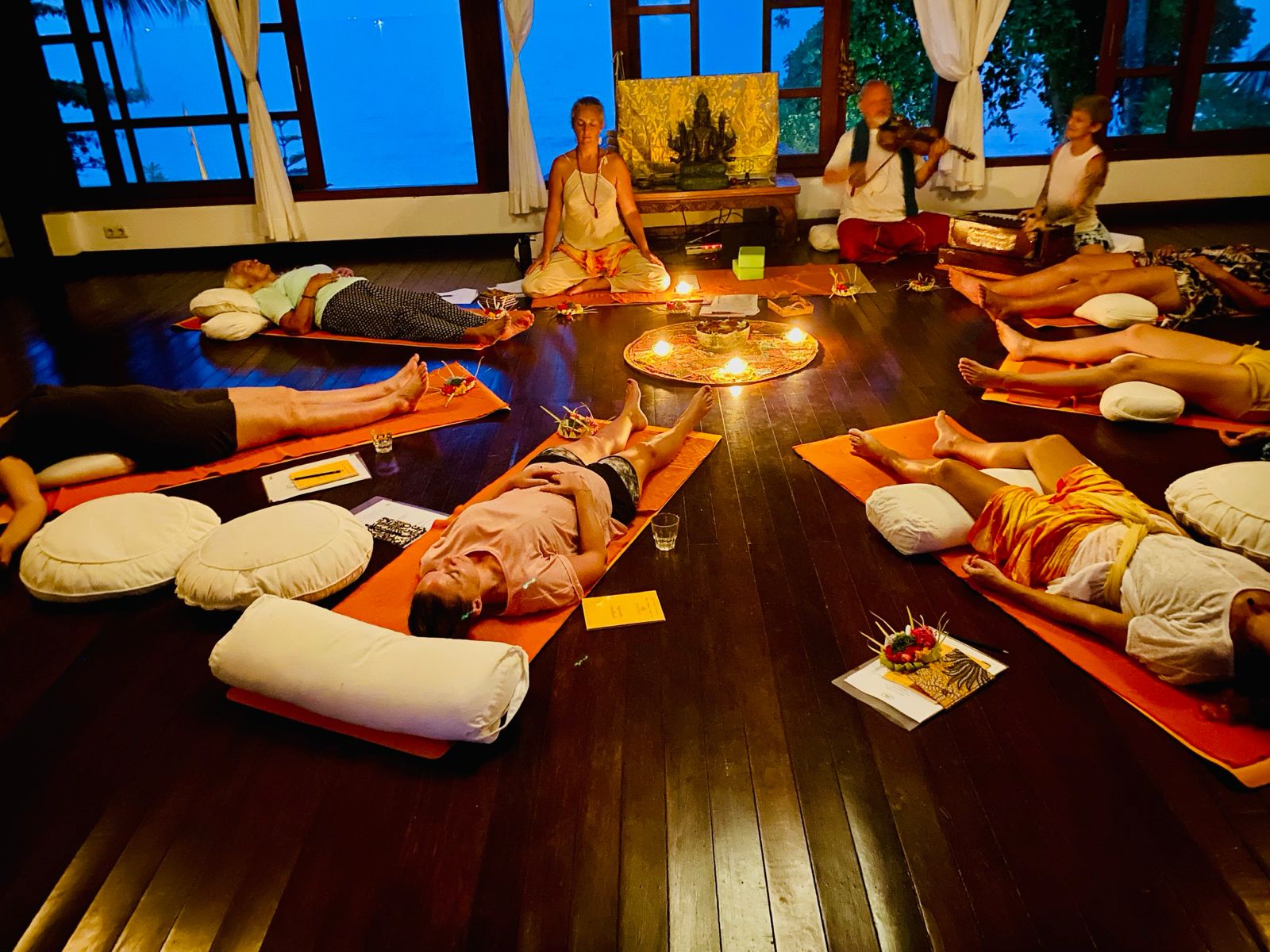Meditation – When the mind becomes still
Meditation is one of the oldest and at the same time most modern practices in the world. It leads us away from the outer activity that dominates our daily lives toward a quiet, conscious state within — to meet ourselves in depth.
The mind wants to think

Our mind is designed to be active. It wants to think, plan, compare, and judge — that is its nature. Therefore, meditation does not mean having no thoughts. Thoughts are like waves on the surface of a lake — we cannot stop them; they are part of it. But when the mind becomes still, when the water grows clear and calm, we can see to the bottom. By slowing down the constant stream of stimuli and thoughts, space and silence arise. The breath becomes calmer, perception clearer.
Meditation can make us aware that it is not the outer circumstances that entangle us, but our reactions and judgments about them.
Conzentration – The path to meditation
Our everyday life is full of stimuli, tasks and thoughts. When we focus the mind on one object — for example, the breath or a sound — and practice staying with that concentration, the stream of thoughts slows down, and meditation can happen. It is about mindfulness and awareness on the path toward clarity and truth.
Why do we meditate?
By slowing down the constant stream of stimuli and thoughts, the nervous system can regenerate, the breath becomes calmer, and perception clearer. We begin to recognize our patterns and judgments and learn to accept life as it is — in change, in flow, with light and shadow.
Meditation supports us in reducing stress, regulating emotions, releasing emotional blockages, deepening body awareness, calming the mind, and increasing energy and presence.

Scientifically researched
Numerous studies confirm the positive effects of meditation on body and mind.
During meditation, heart rate and breathing slow down, stress hormones decrease, and the nervous system regenerates. The brain and the heart come into harmony.
Meditation in Prana Veda Bali
During our retreat weeks at Prana Veda Bali, you can experience meditation in many different ways.
We offer you various types of meditation so you can discover which one supports you best to enter stillness.
Each afternoon, we practice one of these meditation forms:
Yoga Nidra – an inner body journey and deep relaxation between wakefulness and sleep.
Floating Meditation – an experience in our Watsu pool, being held and supported in weightlessness in the water, and also learning to hold space for others in this experience.
Yin Yoga – gentle yoga asanas in which you rest for several minutes to relax the muscles. Fascia and tension can release, and the nervous system comes into harmony.
Silent Meditation – mindful observation of breath, body, and mind to gain inner clarity and insight into the nature of the mind. Vipassana meditation is considered one of the oldest forms of Buddhist mindfulness practice. A silent day is offered per week in Prana Veda.
Mantra Meditation – by focusing on and continuously repeating a mantra, the mind can become still.
Breathwork – using circular breathing, the body receives more oxygen, the nervous system is regulated, and stress is reduced. Stored emotional or physical tension can be released, and awareness can become clearer and more expanded.
Sound Healing – through sound and vibration, cells that are out of balance can begin to heal.
Kundalini Meditation, Dance Meditation, Ecstatic Dance – experience yourself through body movements, releasing held energies and blockages.
Cacao Ceremony – a healing ritual where raw cacao is consciously consumed to support heart opening, grounding, and connection to oneself, to others and to intuition. Breathwork, meditation, music or dance and mantras are also part of this practice.
“Happiness is being with what is.
Unhappiness is the difference between what is and what should be.”
Indian proverb





